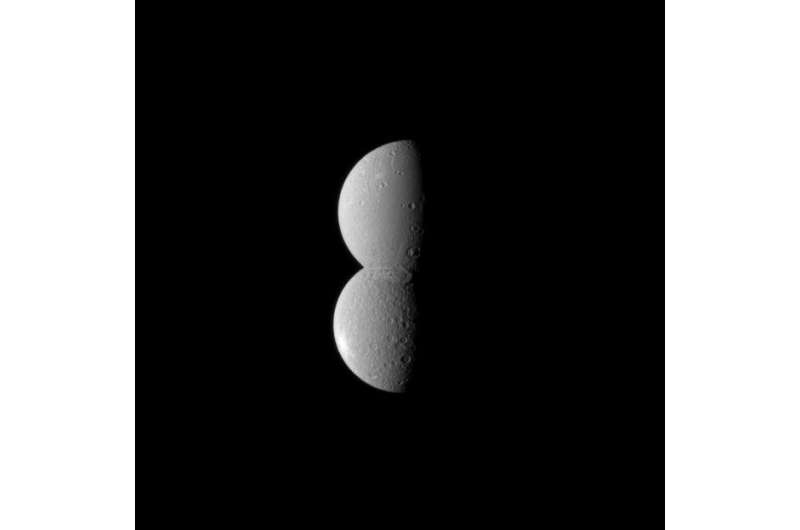Credit: NASA/JPL/Space Science Institute
Sometimes it's all about perspective. This very convincing image of a conjoined moon masquerading as a snowman is actually two separate Saturnian moons – Dione and Rhea – taken from such an angle by the international Cassini spacecraft that they appear as one.
Dione (top) was actually closer to the spacecraft at the time the image was taken, at around 1.1 million kilometres, compared to Rhea (bottom) which was around 1.6 million kilometres from Cassini. Dione has a diameter of 1123 kilometres and Rhea is larger with a diameter of 1528 kilometres, but they appear to have a similar size in this image due to the difference in distance.
The moons also orbit Saturn at different distances: Dione lies at roughly the same distance as the Moon from the Earth and orbits around the ringed planet in just 2.7 days, while Rhea sits slightly further away and has a 4.5 day orbit.
Dione has a large crater called Evander, centred at the south polar region, which allows the two moons to blend seamlessly together in this view. They also have a similar reflectivity, contributing to the snowman-like appearance, while also pointing to a comparable surface composition.
Dione is made of around one third rock, comprising the core, and two thirds ice with a suspected subsurface ocean.
Interestingly, the moon is more heavily cratered on the hemisphere that faces away from the direction of motion compared to the hemisphere that faces the direction of motion, opposite to what is expected as the forward facing side of the moon should be bombarded with more material. This unusual cratering pattern suggests that it suffered an impact which spun the moon around 180 degrees.
Rhea is Saturn's second largest moon, after Titan, and is similar to Dione in density, but is around one quarter rock mixed with three quarters ice – a giant frozen dirty snowball.
Provided by European Space Agency
























